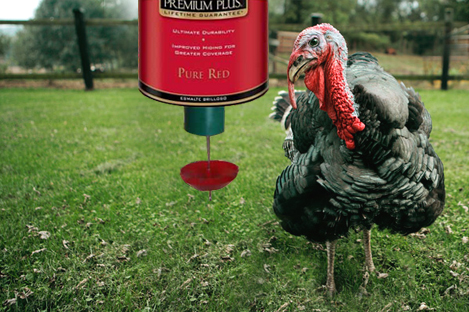
The Black Turkey is probably the first turkey to be developed from Native American stock. The terms "Norfolk Black" and "Black Spanish" are also used in the United States when referring to this breed. The Black was recognized by the American Poultry Association in 1874. Some of the first turkeys taken to Europe in the 1500s were Black Turkeys. They became very popular, particularly in Spain.
Providing fresh feed at all times is among the most essential aspects of breeding healthy poultry. The PECk-O-MATIC Automatic Turkey Feeder helps combat the wastage of feed that used to happen with traditional feeding methods.The 3/8 inch regulator disc can be used to provide crumble or milo to the turkeys. The ¼ inch regulator disc is best suited to provide millet and mash. Such automatic poultry feeding mechanism not only saves feed but also discourages vermin onto the site.
The plumage of the Black turkey is a lush, metallic black with a greenish sheen on top and dull black under parts. Poults will usually have white or bronze in their feathers but they molt into mature plumage. The beak is black, the wattle is red, which may change to bluish-white and the shanks and toes are pink in adults. The iris is dark brown. The standard weight is 23 pounds for young toms and 14 pounds for young hens. The Blacks are a tad bit smaller than the Bronzes. This breed matures naturally, well suited for the outdoors. The turkeys with access to green feed and corn tend to have a more yellow tinge to the skin.
Black turkeys were raised by early colonists when they were sent in the holds of ships on the transatlantic crossing from Europe to the New World. It is probable that the turkey consumed at the first Thanksgiving meal may have actually been from European birds, rather than wild turkeys native to the continent. They are considered an endangered variety of heritage turkey today by the American Livestock Breeds Conservancy and included in Slow Food USA's Ark of Taste, a catalog of heritage foods in danger of extinction.